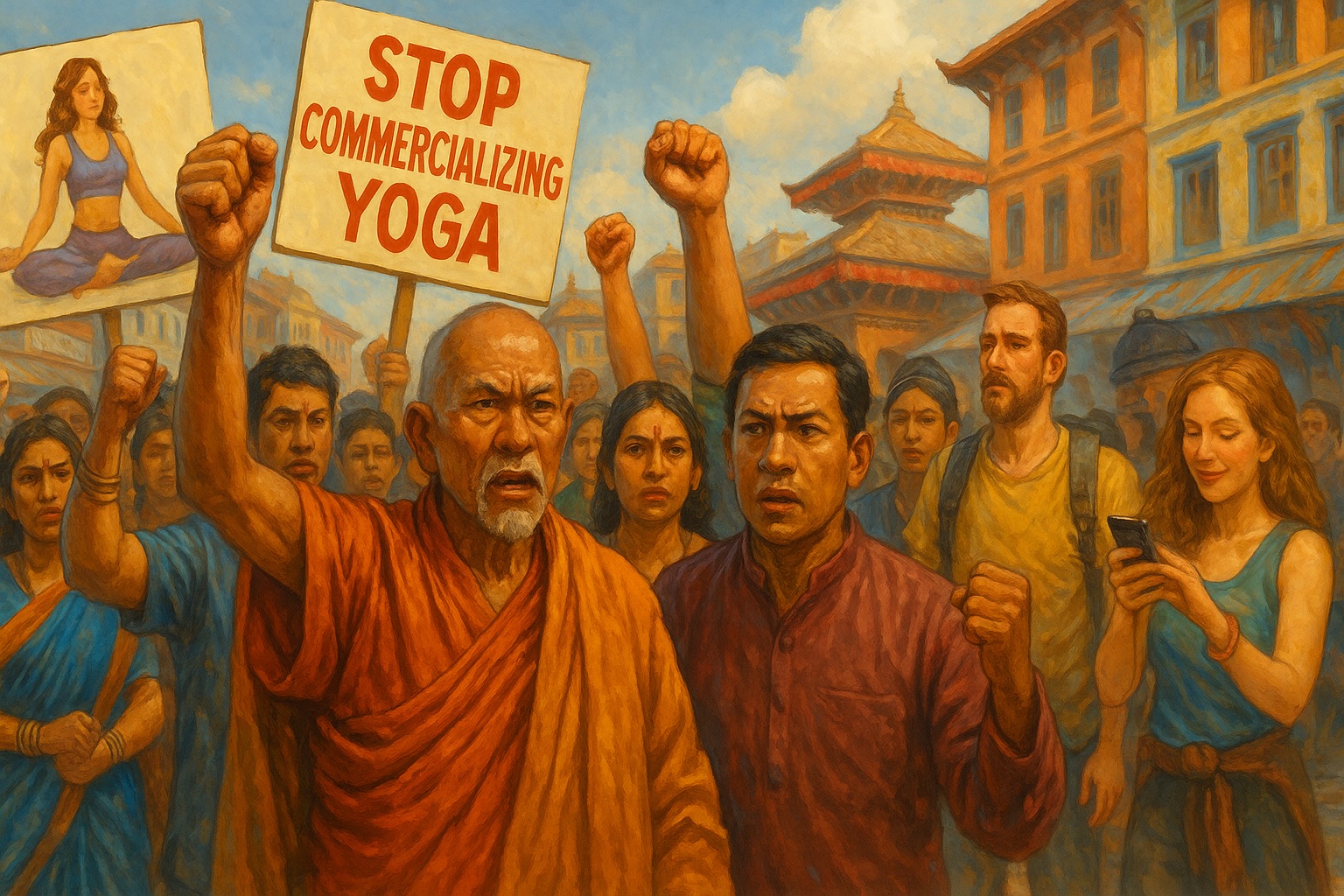Nepal’s Tantra Yoga: Is Its Spiritual Power Being Lost to Western Sex Craze?

Once regarded as the hidden heart of Himalayan spirituality, Tantra Yoga is now under siege from a tidal wave of global commercialization. As wellness industries in the West repackage Tantra’s profound practices into sensual workshops and Instagram-friendly trends, Nepal—home to some of the tradition’s most authentic lineages—faces a critical moment. Will ancient Nepali wisdom survive, or will it be diluted beyond recognition in the modern rush for quick-fix enlightenment?
Tantra Yoga: Origins and Concept
Tantra Yoga traces its origins to ancient India and Nepal, with roots extending at least as far back as the 5th century CE. Far more than the Western caricature of “yoga for better sex,” classical Tantra is a comprehensive spiritual science. Foundational texts like the Vigyan Bhairav Tantra and the Hatha Yoga Pradipika detail rituals, meditation, mantra, breathwork (pranayama), and sometimes sacred sexual practices—all designed to harmonize the body and mind, awaken latent spiritual energy (kundalini), and unite individual consciousness with universal consciousness.
Tantra is unique among yoga systems for its acceptance of the physical world, including sexuality, as divine. While some Tantric schools do include sexual union (maithuna) as part of advanced rituals, these practices are reserved for serious aspirants under strict guidance. The majority of Tantra’s teachings focus on mental discipline, ethical conduct, ritual purity, and meditative awareness.
Modernization and Challenges
The global popularity of yoga has brought both opportunity and risk for authentic Tantra traditions. Schools such as the Bihar School of Yoga in India, founded by Swami Satyananda Saraswati, have made serious efforts to present Tantra’s philosophy and practices responsibly. The Bihar School’s Yoga Publications Trust has published widely respected works explaining Tantra as a system for spiritual awakening, not merely a means to enhance pleasure. Meanwhile, respected scholars such as Dr. Georg Feuerstein and Sir John Woodroffe (“Arthur Avalon”) have translated and contextualized classical Tantric texts for a modern audience.
Yet, in recent years, Tantra’s image in the global market has been shaped more by Western entrepreneurs and influencers than by its original South Asian guardians. Sensationalized “Tantric sex” workshops and online courses, often with little grounding in classical philosophy, risk overshadowing the depth and discipline required for true Tantra. This has sparked concern among serious practitioners in Nepal and India, who see a vital part of their spiritual heritage at risk of distortion.
Learning Authentic Tantra Yoga in Nepal
For Nepali seekers and international visitors, learning genuine Tantra Yoga involves much more than signing up for a trendy retreat. Authentic study requires commitment to ethical living (yama and niyama), steady practice of meditation and breathwork, and—when ready—initiated guidance from a qualified teacher. Institutions such as the Bihar School of Yoga (which maintains strong connections in Nepal), and the Kaulantak Peeth in Himachal Pradesh, India, offer in-depth study programs. Academic departments at Nepal Sanskrit University and Tribhuvan University continue to research and teach the classical roots of Tantra.
Benefits of Tantra Yoga
When approached with respect and discipline, Tantra Yoga offers significant benefits:
-
Awakening and balancing energy: Practices work to release and harmonize life force energy (prana/kundalini), leading to greater vitality.
-
Emotional healing: Many techniques help process trauma and restore inner balance.
-
Deeper self-awareness: Meditation and ritual cultivate mindfulness, presence, and self-understanding.
-
Enhanced intimacy (when practiced ethically): For committed couples, classical practices can foster deeper connection and unity—not just physical pleasure, but spiritual partnership.
-
Spiritual growth: The ultimate goal remains liberation (moksha) and a sense of oneness with all existence.
Looking Forward
As Nepal stands at the crossroads of spiritual heritage and global influence, the future of Tantra Yoga will depend on how teachers, students, and society choose to protect and promote authentic practice. The challenge is clear: can Nepali tradition maintain its soul in the age of instant enlightenment? The answer may shape not only the fate of Tantra, but the spiritual identity of a new generation in Nepal and beyond.




![From Kathmandu to the World: How Excel Students Are Winning Big [Admission Open]](https://www.nepalaaja.com/img/70194/medium/excel-college-info-eng-nep-2342.jpg)
